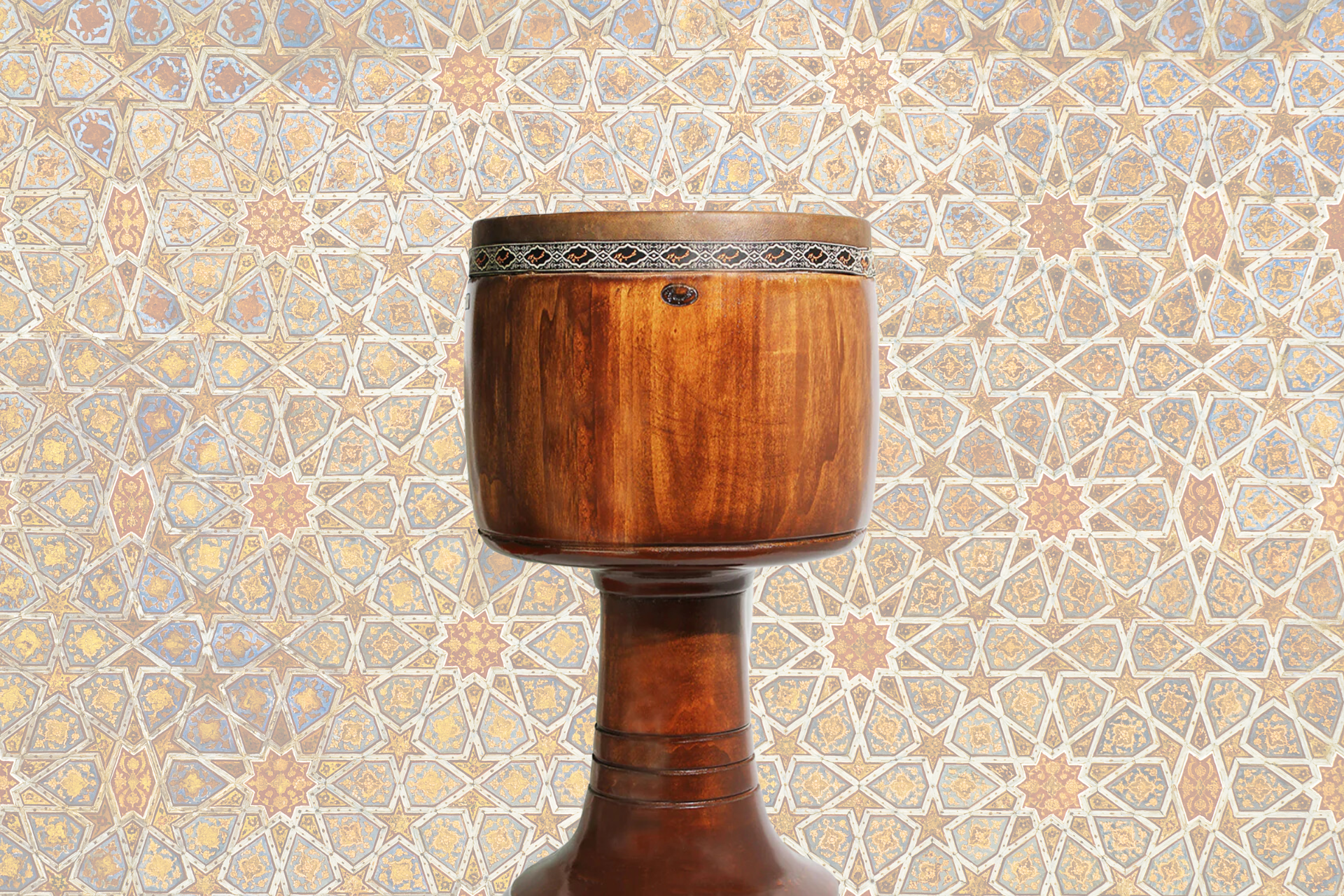General Articles
Crafting the Persian Tonbak: A Journey of Precision and Artistry
The tonbak, a traditional Persian drum, is not merely a musical tool; it's a work of art born from centuries of craftsmanship and dedication. In this article, we'll delve into the intricate process of creating this mesmerizing instrument, emphasizing the artistry and precision involved.
Introduction to the Tonbak
Before we dive into the crafting process, let's briefly acquaint ourselves with the tonbak. This goblet-shaped drum has a rich history in Persian music, dating back to ancient times. It comprises a wooden body, a stretched membrane (typically goat or camel skin), and a thin metal ring. While its history is fascinating, our focus today lies in the creation of this instrument.
Selecting the Wood
Wood selection is paramount in tonbak craftsmanship. The chosen wood not only affects the instrument's sound but also its overall durability and appearance. Luthiers, skilled in the art of instrument making, typically opt for hardwoods like walnut, rosewood, or mulberry. The wood is carefully seasoned, ensuring it's free from moisture and defects that could compromise the tonbak's quality.
Shaping the Body
The body of the tonbak is meticulously shaped into its iconic goblet form. This step involves intricate carving and sculpting, where the luthier's expertise shines. Using specialized tools, they hollow out the interior, creating the resonating chamber that amplifies the sound when the instrument is played.
Applying the Skin
One of the most critical steps in crafting a tonbak is applying the membrane. Traditionally, goat or camel skin is used. The skin is soaked in water to make it pliable, then stretched over the body of the drum. Achieving the perfect tension is crucial to producing the desired tonal quality. This process requires a delicate touch, as even a slight miscalculation can affect the sound.
Attaching the Tuning Rings
The tonbak's tuning rings play a pivotal role in fine-tuning the instrument's pitch. These rings, typically made of brass, are carefully fitted onto the drum's skin. They can be adjusted to achieve the desired pitch and tone, giving the tonbak its distinctive sound. The luthier's expertise is once again evident here, as precision is key.
Crafting the Neck
The neck of the tonbak, also known as the sarban, is another element that requires meticulous craftsmanship. It is often made from hardwoods like rosewood and features intricate carvings. The sarban is attached to the body and serves as the handle for the player. It must be perfectly aligned for comfort and functionality.
Applying Decorative Elements
Beyond its musical prowess, the tonbak is a visual masterpiece. Decorative elements are added to enhance its aesthetic appeal. Skilled artisans often adorn the instrument with intricate designs, calligraphy, or inlays. These embellishments not only showcase the craftsman's artistry but also contribute to the tonbak's cultural significance.
Finishing Touches and Polishing
The tonbak's creation is nearing completion, but the final steps are no less important. Finishing touches involve smoothing the wood, applying a protective finish, and ensuring all components are securely fastened. The luthier meticulously checks every aspect of the instrument to guarantee its structural integrity and functionality.
Quality Assurance and Sound Testing
Before a tonbak leaves the workshop, it undergoes rigorous quality assurance and sound testing. Sound testing is an art in itself, where the luthier taps and plays the instrument to ensure it produces the desired tones. Any discrepancies are addressed, ensuring that the final product meets the highest standards of tonal quality.
Conclusion: A Masterpiece in Every Tonbak
In closing, the creation of a tonbak is not a mere craft; it's an art form that combines tradition, skill, and passion. Each tonbak is a unique masterpiece, bearing the mark of its creator's expertise and creativity. Whether played in a traditional Persian ensemble or appreciated for its visual beauty, the tonbak continues to enchant music enthusiasts worldwide, showcasing the enduring legacy of Persian craftsmanship.
Crafting a tonbak is a labor of love, a process that pays homage to the instrument's rich history while embracing the creativity and dedication of modern artisans. Each time you hear the mesmerizing rhythms of a tonbak, remember the journey of precision and artistry that brought it to life.
Discover the rhythmic magic of the tonbak at Rhythm Music Shop, your one-stop destination in Markham. Whether you're in Markham, Richmond Hill, Vaughan, or anywhere in the GTA, we've got you covered in-store and online. Visit us today!

